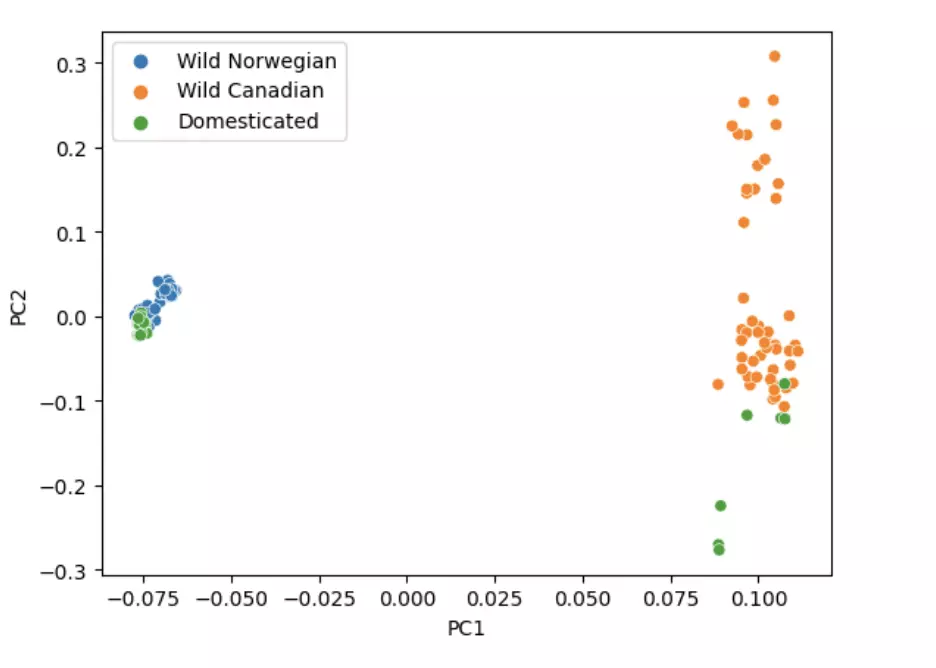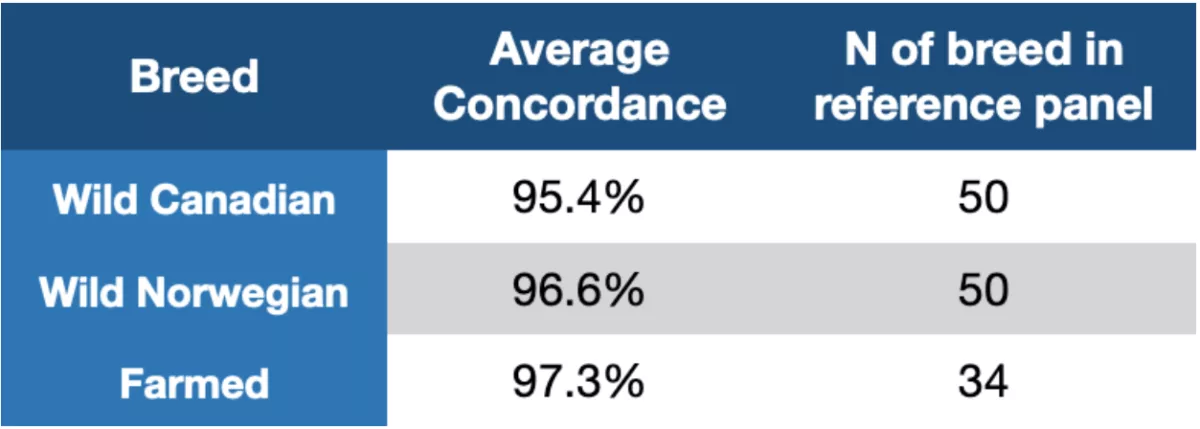At Gencove, our mission is to expand the accessibility and application of genomics. In 2020, 90.5 million and 84.1 million metric tons of fish were captured from the wild, and farmed through the controlled aquaculture process respectively. Farmed salmon contributes significantly to global production. Keeping this in mind, we are excited to announce the release of our first Atlantic Salmon haplotype reference panel, with the goal of bringing affordable whole genome information to aquaculture genomic improvement.
This panel enables both low-cost genotyping for genomic selection as well as an unprecedented level of resolution for a high throughput assay for research and fine-mapping in Atlantic Salmon.
Panel construction
To construct the haplotype reference panel, we first identified the latest reference genome (Ssval v3.1), and combined 134 publicly available salmon FASTQs from the data to perform the salmon population structure analysis by Macqueen et al [1]. Next we e created a haplotype reference panel, by performing variant calling and phasing. The resulting reference panel comprises 16.3M SNPs and short indels.
Within the public data we used, there were three experimental groups: salmon of Canadian descent (n=50), of Norwegian descent (n=50), and farmed salmon (n=34). To examine the population structure of the samples that comprised our reference panel, we performed PCA on a subset of the markers. In the following figure, the axes are the first two principal components of the marker subset, and each point on the plot represents an individual in our reference panel.
Each point is colored by the sample breed, and wild animals of the same breed clustered together, illustrating the distinctness of population groups and replicating the structure found in public literature.

